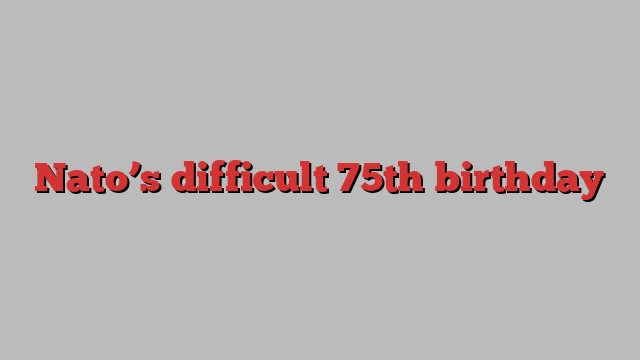
Unlock the US Election Countdown newsletter for free
The stories that matter on money and politics in the race for the White House
Russia’s bloody daylight missile attack on Kyiv and other Ukrainian cities on Monday, which also hit a children’s cancer hospital, provided a dreadful backdrop to the 75th anniversary summit of Nato under way in Washington. An organisation created in 1949 to secure lasting peace in Europe is still grappling with the largest threat to European security since its foundation. The Ukraine war is at once a challenge to the alliance and an affirmation of the need for it still to exist. But the summit’s results seem set to be underwhelming.
The risks for the organisation are, unfortunately, not all external. The Washington summit is overshadowed by concerns over the health of 81-year-old President Joe Biden that have brought into sharp focus the possibility of Donald Trump’s return to the White House. Nato’s dominant member could soon be led by a president who may cut off US aid to Ukraine and, even if he does not entirely withdraw the American security umbrella, demand that European members carry much more of the burden of their own security.
Other leaders of key Nato members — France’s Emmanuel Macron and Germany’s Olaf Scholz — are, meanwhile, battling rising populism that could constrain their ability to raise defence spending any further. Britain, whose new Labour prime minister Sir Keir Starmer arrived in Washington on the back of a landslide election victory, suddenly seems a bastion of moderation. But Starmer is caught between an intense fiscal squeeze and army chiefs’ urgings to reverse the depletion of one of Nato’s most capable militaries.
If part of the Washington summit’s task is to Trump-proof the alliance, it seems set largely to fall short. Nato secretary-general Jens Stoltenberg tried to muster a multiyear funding package for military aid for Ukraine, but allies have agreed only to €40bn over the next year.
There will be important steps to “Nato-ise” aid and training for Ukraine, making more use of the alliance’s resources. Nato will take over co-ordination of weapons donations and ammunition deliveries from the 57-nation “Ramstein” group. A new Nato military command in Wiesbaden, Germany, will become a planning centre for training and equipping Ukrainian troops. The US and others have pledged more vital air defence systems and weapons to Kyiv.
But on the central issue of Ukraine’s future Nato membership the language is likely to mark little advance on last year’s vague assertion that the alliance would extend an invitation to Kyiv to join “once allies agree and conditions are met”. Admitting Ukraine today is not on the agenda; that might draw Nato itself into conflict with a nuclear-armed Russia. It ought, though, to be possible to issue an invitation now that would put Kyiv on a path to join soon after the conflict is over.
Nato will trumpet that 23 of its 32 members now meet the target of spending at least 2 per cent of gross domestic product on defence, up from only three a decade ago. European members and Canada have together sharply increased spending. Yet given Russia’s mounting aggression, a 2.5 per cent target — met by only a handful of Nato members — already seems more appropriate.
In Moscow, a formal visit by Indian premier Narendra Modi on the same day that Russia’s missiles slammed into Kyiv suggested president Vladimir Putin still has leaders beyond the west who are prepared to deal with him. The fact that Russia’s formal alliances, though, are with autocracies such as Belarus and North Korea offers a marked contrast with the spectacle of 32 Nato allies, plus Asia-Pacific democracies such as Japan and Australia, marking 75 years of their joint project. The Nato nations still have formidable economic and military power at their disposal — but they need to make it count.